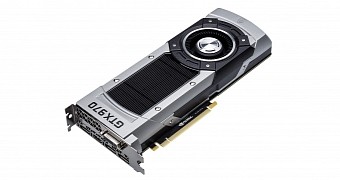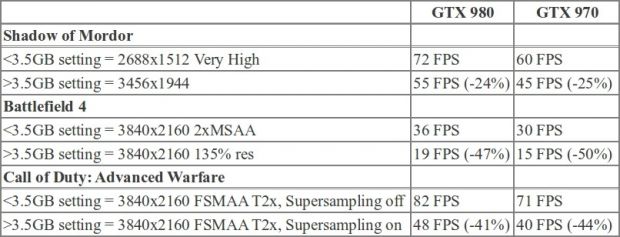Last week it came to light that NVIDIA's GeForce GTX 970 Maxwell-based graphics card behaved oddly when a game tried to use more than 3.5 GB of the 4 GB available. Odd in that frame rate suddenly dropped dramatically.
A good number of gamers reported that the frame rates fell, that GPU performance altogether dropped by 20%, or that performance began to jump all over the place.
Lords of the Fallen was mentioned specifically, as was Titanfall, but more or less every game supposedly has this issue. Or the card has issues with them.
Initially, an NVIDIA representative said the company was looking into the problem. Now, the company is finally responding.
The GeForce GTX 970 uses memory differently by design
That is what the Santa Clara, California-based company claims in any event. According to them, the GTX 970 does indeed have 4 GB of memory, but the streaming multiprocessors (SMs) in the GPUs don't work normally.
Because of that, the lower number of crossbar resources in the memory system, memory traffic could only be optimally managed by splitting the VRAM into 3.5 GB and 0.5 GB.
The 3.5 GB memory stack is the one that the GPU works with most of the time, but when a game needs more than that, it accesses the other 0.5 GB.
However, because of this method of access, programs from OEMs and independent programmers which measure memory usage only report 3.5 GB in use.
In a nutshell, when three SMs GM204 were cut from the GM204 GPU, thus making the GPU GM204-300 (GTX 970) physically weaker than the GM204-400 (GTX 980), it led to the performance fluctuations you've been hearing about.
The statement is not attributed to any company executive, being more of a brainstorm from several company employees. However, it seems legitimate since it has come forth through multiple channels.
Questions still remain
A performance comparison between GTX 970 and GTX 980 was released along with the statement, but some users have since commented that average frame rates aren't enough to go by. While they do show that the percentage drop isn't much higher than it is on the full GPU in the 980, the tests don't seem to reflect the real life gaming issues reported previously.
What NVIDIA is saying, in essence, is that the GPU accesses the first 3.5 GB very quickly but not nearly as optimally for the remaining 0.5 GB.
It is feasible, based on evidence, that NVIDIA simplified the memory controller and crossbar setup in order to save time, die size, and power, even if it came at the expense of a few performance percentages once memory allocation passed a certain point. Let's just hope that the situations reported where game performance fell by greater extents were just isolated incidents.

 14 DAY TRIAL //
14 DAY TRIAL // 

